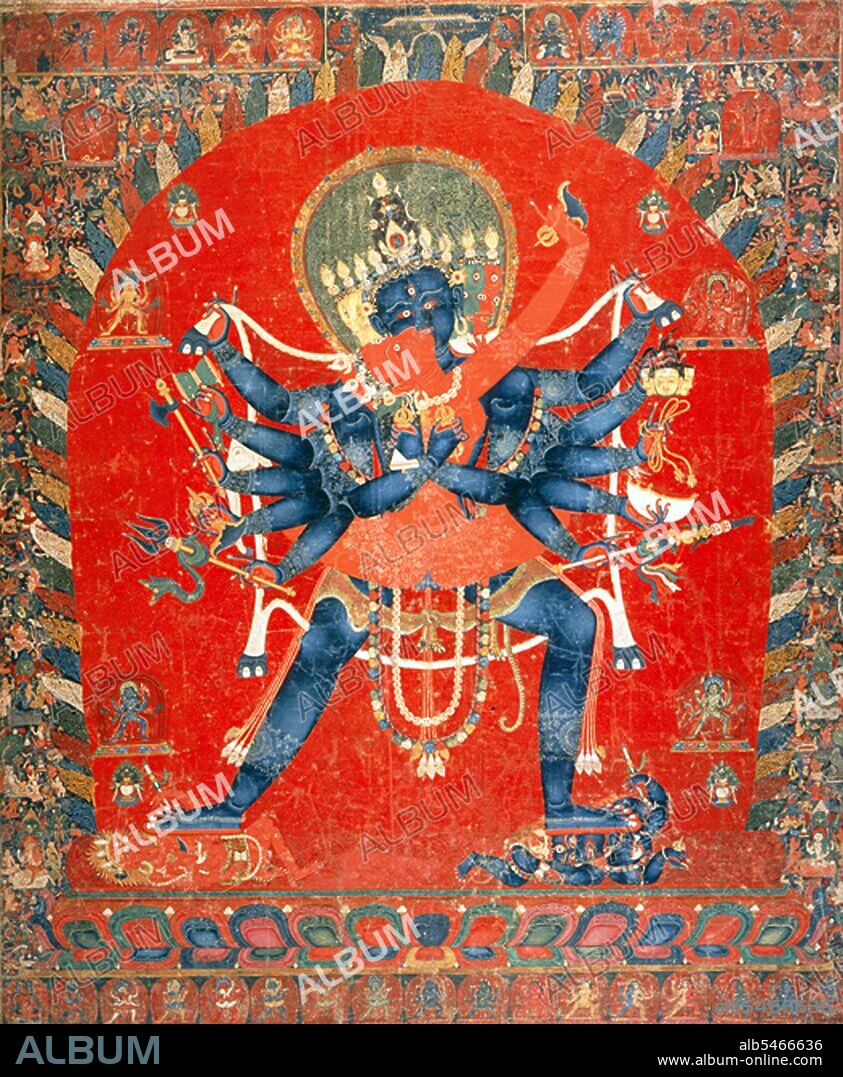alb5466636
China-Tibet: The Buddhist Deities Chakrasamvara and Vajravarahi, Newari thangka, c. 15th century

|
Añadir a otro lightbox |
|
Añadir a otro lightbox |



¿Ya tienes cuenta? Iniciar sesión
¿No tienes cuenta? Regístrate
Compra esta imagen

Título:
China-Tibet: The Buddhist Deities Chakrasamvara and Vajravarahi, Newari thangka, c. 15th century
Descripción:
Ver traducción automática
The Cakrasa?vara Tantra, Chinese: ???? shènglè jingang; Tibetan: Korlo Demchog Gyud (Tibetan: ?????????????? / ????????; Wylie: Khor lo sdom pa / bde mchog gi rgyud) is considered to be of the mother class of the Anuttara Yoga Tantra in the Indo-Tibetan Vajrayana Buddhist tradition. The central deity of the mandala, a heruka known as Sa?vara (variants: Sa?vara & Sa?bara) or simply as Sri Heruka, is one of the principal i??ha-devata, or meditational deities of the Sarma schools of Tibetan Buddhism. Sa?vara is typically depicted with a blue-coloured body, four faces, and twelve arms, and embracing his consort Vajravarahi (in Chinese ???? jingang hàimu) in the yab-yum position. Other forms of the deity are also known, with varying numbers of limbs. Sa?vara and consort are not to be thought of as two different entities, as an ordinary husband and wife are two different people; in reality, their divine embrace is a metaphor for the union of great bliss and emptiness, which are one and the same essence.
Crédito:
Album / Pictures From History/Universal Images Group
Autorizaciones:
Modelo: No - Propiedad: No
¿Preguntas relacionadas con los derechos?
¿Preguntas relacionadas con los derechos?
Tamaño imagen:
3800 x 4615 px | 50.2 MB
Tamaño impresión:
32.2 x 39.1 cm | 12.7 x 15.4 in (300 dpi)
 Pinterest
Pinterest Twitter
Twitter Facebook
Facebook Copiar enlace
Copiar enlace Email
Email
